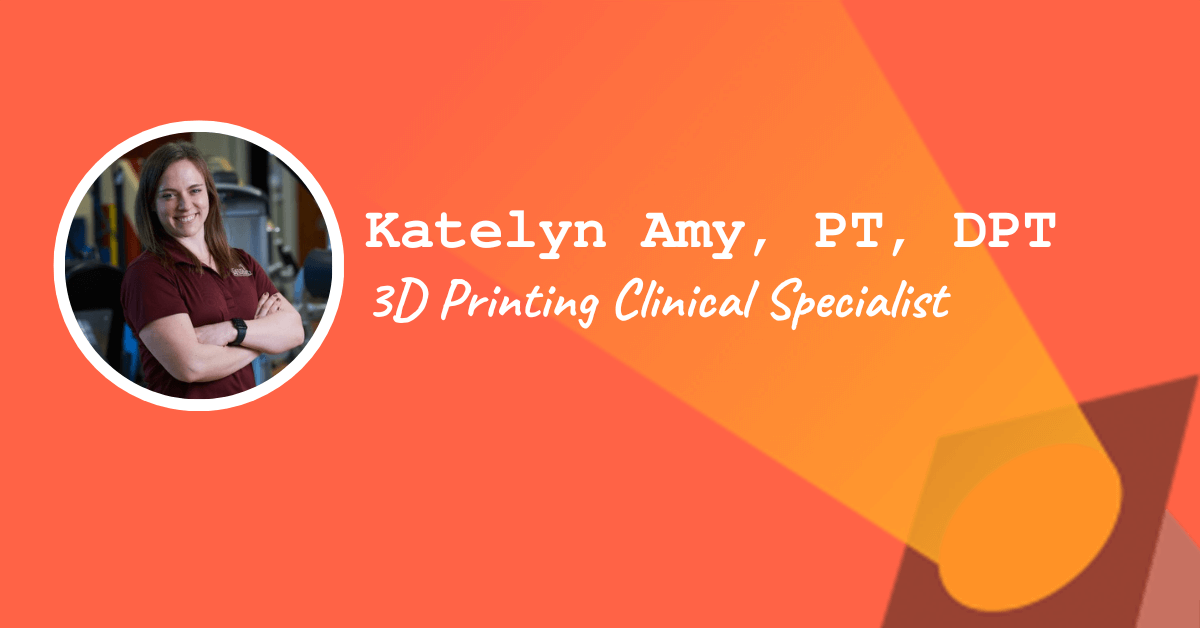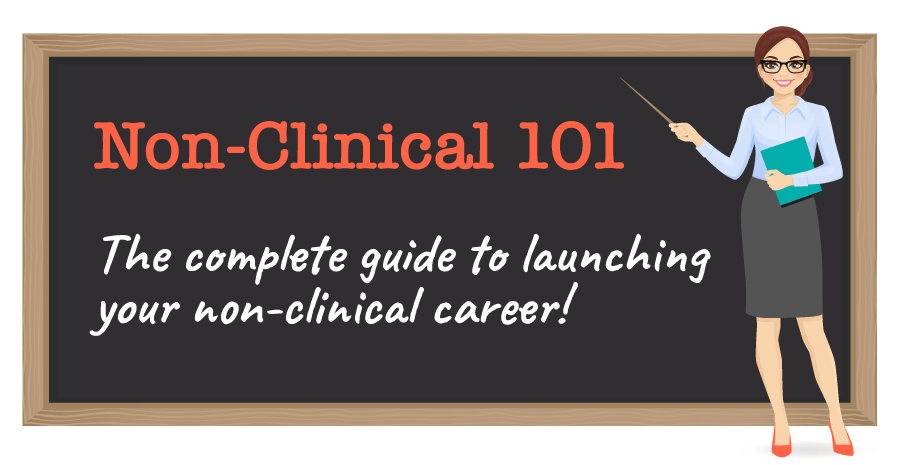This week’s spotlight is on Katelyn Amy, PT, DPT, a non-clinical physical therapist who is now 3D Printing Clinical Specialist!
This post may contain affiliate links or codes. This won’t increase your cost, but it helps keep TNCPT alive, and free of annoying ads! Thank you for your support. 🙂
What is your full name and title for your current, primary role?
Katelyn Amy, PT, DPT — 3D Printing Clinical Specialist
Where are you located?
Center Valley, PA
Where did you go to PT school, and what year did you graduate?
University of Scranton, 2017.
Please refrain from contacting our spotlight participants on social media. There are thousands of readers just like you out there. 🙂 Please ask your questions in the comments on this blog post.
If you’re a Non-Clinical 101 student, you can network with many of our spotlight participants in the alumni groups!
What did you do when you first finished school, and for how long?
I worked in outpatient orthopedic physical therapy for five years.
In what setting(s) did you work, and what types of patients did you treat?
In outpatient ortho, I treated a variety of conditions, including neck pain, plantar fasciitis, chronic pain, concussion, etc.
What did you enjoy about your early roles? What didn’t you enjoy?
I loved getting to know and connect with patients and colleagues. I also loved helping patients feel better.
I did not enjoy the productivity standards and expectation to work >40 hours per week once I became a manager. I was expected to treat as a full-time therapist and maintain the same productivity standards. I was also attending meetings and doing other work on top of it all, with less pay than my employees.
When and why did you decide to do something non-clinical?
I went on leave due to having knee surgery. The month leading up to that, I burned myself out by trying to get the clinic and my employees ready to take over and do everything I was doing.
I felt like I was not paying enough attention to my clients, as my mind was always somewhere else related to managing the clinic. I was spending too much of my free time thinking about or doing something for work. Despite my manager agreeing that I deserved better, there was nothing being done to support me.
What are you doing these days?
I lead a 3D printing service line in a nonprofit rehabilitation network. We offer 3D-printing services in the following settings:
- Post-acute care
- Outpatient
- Independent living
- Long-term care
- Long-term acute care hospital
I created a generic catalog if people would like something printed quickly based on designs that already exist. I also spend time consulting with patients and therapists to come up with new designs that will address their unique problems. I utilize computer-aided design (CAD) to create digital renderings of the designs. Then, I send it to our 3D printers to print and deliver to the end users.
Are you still treating patients, or are you solely non-clinical?
I am solely non-clinical now.
How long have you been in your current 3D printing clinical specialist role?
I started this role in May 2022.
Did you get any special certifications or training along the way to help you get into your current 3D printing clinical specialist role?
I took a few courses related to 3D printing on Coursera, and I consulted with local universities and other personally known sources of information.
How did you find your job? Did you apply or find it through a connection?
I was a treating therapist for this company. I like our overall core values and mission and did not specifically want to leave.
I knew a lot of therapists go non-clinical in the realm of IT, and I was considering that. In the meantime, I wanted to stay with the company in a non-managerial role.
As I was looking through the job listings, I came across this position, but it was a part-time job. I was intrigued by the idea but needed a full-time position. As I was pondering it and talking with a few contacts who are in engineering, I decided I would give in a try. I came back to the listing to find it was now full time, and that helped to solidify my decision.
Did you do anything special to your resume and cover letter to land the job?
I showed initiative by taking a 3D-printing course on my own time, as I had no previous experience.
How have people reacted to you leaving patient care?
I have received mostly positive responses from people. As expected, the most common question I receive is, “Do you miss it?”
What’s a typical day or week in the life like for you? What types of tasks and responsibilities fill your time?
Throughout the week, I am responsible for:
- Performing maintenance of the printers
- Creating CAD designs
- Finding pre-existing designs
- Consulting with patients and therapists to determine their needs and find solutions
- Printing the devices
- Post-processing the devices (sanding, assembling, etc.)
I often consider how to expand our reach and network, both within the company and externally.
What are some of the rewards of your role? What are the biggest challenges?
The rewards of my role are that I still get to help people live their best lives while challenging myself with skills and design work that are outside of my original scope of work.
How did your clinical background prepare you for this role? Which skills transferred?
My clinical background of performing examinations and evaluations, especially with direct access, and coming up with a therapy diagnosis transferred to this job. I perform an interview/evaluation to determine the problem and an examination to further identify the issues related to the problem.
Ready to launch your own non-clinical career?
Roughly speaking, how are the hours and pay compared to patient care?
My hours can be capped at 40 most weeks, with some wiggle room if I need to attend a personal meeting or doctor’s appointment. My pay was maintained from my manager’s position, which at the time was 10k more than my treating salary.
What type of person do you think would do well in your 3D printing clinical specialist role?
For someone to do well in my role, they would need to be creative, open-minded, detail-oriented, and have interest and/or experience with electronics, 3D printing, and computers. Ideally, they would also have a basic understanding of coding and have a strong drive to figure things out.
Do you work remotely or onsite?
I am hybrid. Most often, I am onsite, but I have the option to be remote as needed.
Does your organization hire PT, OT, or SLP professionals into non-clinical roles? If so, what type of roles?
Yes. In our small and new department of Good Shepherd Learns, Creates and Research, we have hired clinical staff into non-clinical roles.
Did you read any books, take any courses, or do anything special overall to get you where you are today?
Yes, including Coursera courses on 3D printing, general education via YouTube, and other online sources. I informally took a local university’s 3D printing course by the professor who is collaborating with us for this program. I have also taken a design thinking course via IDEOU.
What is a typical career path for someone in your 3D printing clinical specialist role?
The career path is unknown at this time, as this is a brand-new position and department for our network.
What is next for you? What are your high-level career aspirations?
I hope to continue getting this program up and running, maintain this position, and maybe if we get large enough in the network, have some employees under me.
Do you have any special words of wisdom for the readers?
In general, if you’re considering a role that is beyond your current experience, don’t be afraid to take the plunge. As long as you are willing to learn and work with external sources to be the best you can in the new role, you will succeed.
What career advice would you give yourself that you wish you had during school?
Be a bigger advocate for yourself regarding your pay and boundaries in your jobs.





